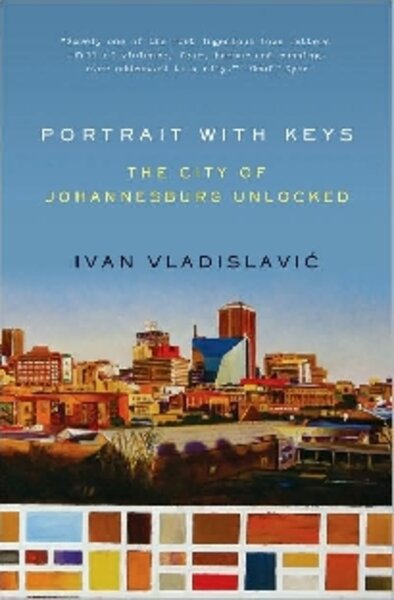Portrait with Keys
Loading...
It’s a simple idea: a tour of the city of Johannesburg, its city streets, its history, its walled gardens, and tightly guarded homes. In other words, a portrait of a city that is notoriously inaccessible for the uninitiated. But what Ivan Vladislavic’s Portrait with Keys: The City of Johannesburg Unlocked ultimately delivers is a study of race, fear, community, and security – common preoccupations for all South Africans, especially Joburg residents.
Newly released in the United States after debuting in South Africa to high praise two and a half years ago, “Portrait of Keys” lends inside knowledge to American readers whose familiarity with Johannesburg will likely be limited to news reports of violent crime. Here, instead, is a chance to understand the city through the vision of one of its residents (in this case, a white South African of Polish decent).
The city’s natives are “finding ways to keep our balance in a tide of change,” Vladislavic writes, recounting a muggy evening spent with warming beers and old friends. “We have grown up in this air, this light, and we grasp it on the skin, where it grasps us. We know this earth, this grass, this polished red stone with the soles of our feet. We will never be ourselves anywhere else. Happier, perhaps, healthier, less burdened, more secure. But we will never be closer to who we are than this.”
Set around the city and across roughly three decades, “Portrait of Keys” is comprised of numbered vignettes, which range in length from a few lines to a few pages. Some are memoiresque, some offer lessons in Joburg’s geography and history, while others recount news stories that are particularly suggestive city’s unique flavor. Each is carefully crafted with the stunning language and lyric descriptions that have made Vladislavic one of the most renowned and respected writers working in South Africa today.
In one breath, Vladislavic writes of a freak snowstorm in apartheid-era Joburg. More than just a novelty for unaccustomed Africans, the snow was a surprising equalizer, a bridge across racial divides: “People threw colour at one another. ‘You want to be white?’ the newspaper vendors said, ‘Well here it comes’... and this ‘being white,’ this ‘white’ itself was nothing more than a froth that melted between your fingers or burst apart on a turned shoulder, was something improbable and silly that you could play games with, that did no real harm, that would not last.”
In the next section, Vladislavic returns to a discussion of Max the Gorilla, begun in a previous segment. Max, a resident of the Joburg Zoo, became a national hero after he was shot by intruders fleeing the police. With deliberate restraint, Vladislavic refrains from commenting on the story, leaving readers to draw their own conclusions about its importance or implications.
In the same way that Vladislavic deconstructs the narrative into bite-sized pieces, so too he dismantles the massive Joburg. In scraps of history spread throughout “Portrait with Keys,” Vladislavic traces the city from its pre-mining days, when it “offered no more than grazing for a handful of cattle farmers.” After the first gold was discovered in Witwatersrand in 1886, the city developed rapidly around its mines, so that the heart of the city now lies atop the wagon track of the original mining camps. “We are all still prospectors, with a diggers claim on the earth beneath our feet,” concludes Vladislavic.
Stringing together these autonomous sections allows “Portrait with Keys” to move quickly through a massive amount of information. At times, however, the leap from one section to the next can also be jarring and disorienting. Vignettes are scattered in seemingly random order, with little attempt to bend to a narrative arc (though there are suggested itineraries at the back of the book, each a list of numbered passages for the reader to string together). Names, places, and people are introduced without explanation or context, and the text is dotted with untranslated Afrikaans.
Still, the end result is a familiarity with Vladislavic and his Joburg world that feels organic, arrived at by allowing the reader to spend a great deal of time with the writer, building a shared history. However abrupt the transition and introductions may feel, characters and themes resurface until they become familiar, known.
Like the city it studies, “Portrait with Keys” is complex, with vast rewards for the patient reader. The book allows readers to unlock Vladislavic’s specific Joburg, as it exists through his particular experience of it. The people and places and passage of time in his life reveal the character of his city, of his South Africa. Just as being a modern South African can be a demanding, confusing task for Vladislavic, “Portrait With Keys” can be a challenging read.
In the end, however, both are well worth the effort.
Tracey D. Samuelson is a Monitor correspondent. She has previously lived and worked in South Africa, and returns whenever possible.






